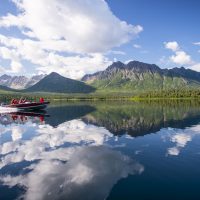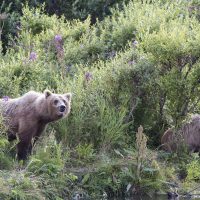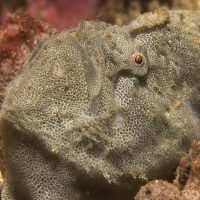Filter Results
Designer river flows can benefit native fish over introduced fish species
A new study shows that dams can be designed to benefit native fish, instead of only harming them. Eighteen years of data were collected about river flow, native fish species, and nonnative fish species in a large dryland river basin in the southwestern US, and then analysed to find the best patterns of water release for native fish species. Remarkably, releasing water from the dams in a designer pattern could produce benefits for native fish species that are even greater than the benefits of mimicking natural river flow patterns.
Read moreCoral bleaching experiment unveil effects of ocean warming on coral feeding reproduction
SAFS faculty Jacqueline Padilla-Gamino and graduate student Jeremy Axworthy just returned from a trip to Hawaii where they performed coral bleaching experiments to understand the effects of stress from heating on coral feeding and reproduction. Their study aims to find biomarker molecules to identify corals that are most likely to recover and reproduce after a bleaching event, improving predictions of coral responses to bleaching events.
Read moreRay Hilborn testifies to Senate subcommittee on the reauthorization of US fisheries act
The U.S. is weighing changes to the main act that governs U.S. federal fisheries in the planned reauthorization of the Magnuson-Stevens Fishery Conservation and Management Act. Fisheries science was the focus of the fourth meeting by the Senate subcommittee on this action, and SAFS Prof. Ray Hilborn was invited to testify, pointing out that U.S. fisheries are largely successful, with most overfished stocks now rebuilding, and overall fish biomass increasing in the U.S.
Read moreSAFS professors Parrish and Roberts highlighted for their open science work
To celebrate International Open Access Week, the University of Washington Libraries posted profiles and interviews with two SAFS faculty, Julia Parrish and Steven Roberts, about how they conduct their research openly. The interview with Julia Parrish focuses on her citizen science work, which involves trained members of the public identifying and pinpointing the locations of more than 10,000 dead birds on the Pacific coast each year, and making the data available openly as well as in scientific publications.
Read moreNew 3-D scanning campaign will reveal 20,000 animals in stunning detail
Science magazine reports that faculty members Luke Tournabene and Adam Summers have a new mission in life: CT scanning all the vertebrates in the world, with fish and frogs well on their way. All the scans will be made freely available for researchers to have access to unprecedented 3-D images of the skeletal structure of 80% of all vertebrates.
A CT scan of a pirañha (Serrasalmus medinai), picture by Adam Summers and Matthew Kolman
Read moreRethinking the scientific career
Faculty member Julian Olden and others in ChronicleVitae urge scientists to see their careers as “an adventure on a long and winding path” that involves interacting with nature and making their science relevant. Instead of focusing on publishing small units of science, we should be embracing the spirit of discovery and striving for societal impact.
Read moreStudying Sockeye Salmon
Each summer, aquatic and fishery sciences professor Daniel Schindler and his students travel to Bristol Bay, Alaska to observe one of the most valuable fisheries in the world.
Read the story hereSalmon and Grizzly Bears – Oh My!
Through the School of Aquatic and Fishery Sciences, Sarah Schooler, ’15, spent six weeks in the Alaskan bush, collecting the same data in the field she’d been studying in the classroom: salmon and the hungry habits of grizzly bears.
Sarah Schooler and UW staff and students placing a fishing net on lake Aleknagik.
North Pacific ‘blob’ stirs up fisheries management
A warm water mass in the Pacific Ocean is impacting forage species and stirring up more conversations about the need for ecosystem-based fisheries management. SAFS Professor Tim Essington weighs in.
Read more at Nature.comNew fish genus and species named for its red, fingerlike fins
SAFS Professor Ted Pietsch and SAFS graduate student Rachel Arnold recently relocated an elusive tropical frogfish, last seen in Australia in 1980. After collecting specimens and testing the DNA, they discovered they’d found a new genus and species of fish, now named the red-fingered anglerfish.
Read more at UW Today

